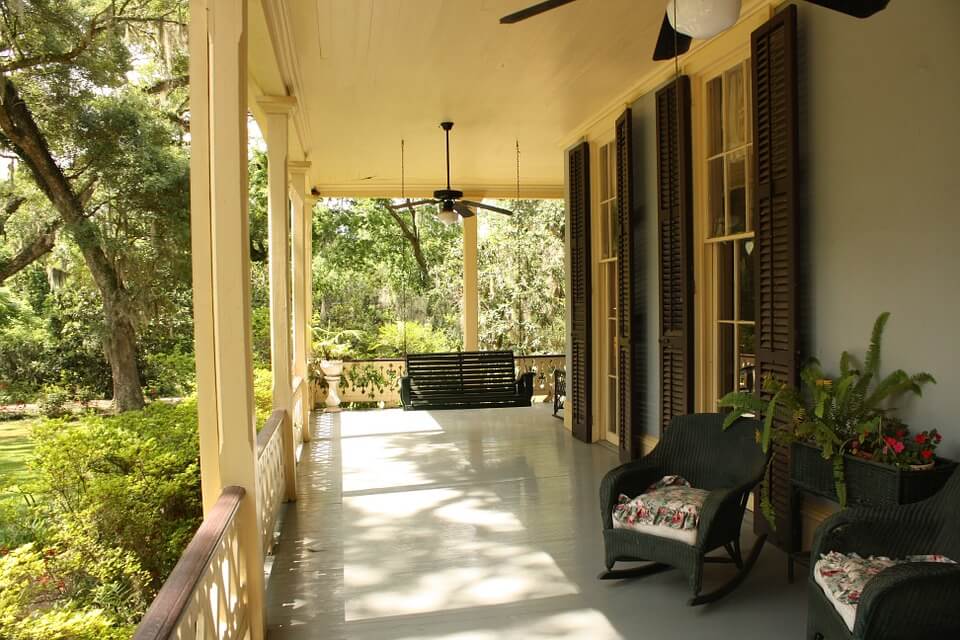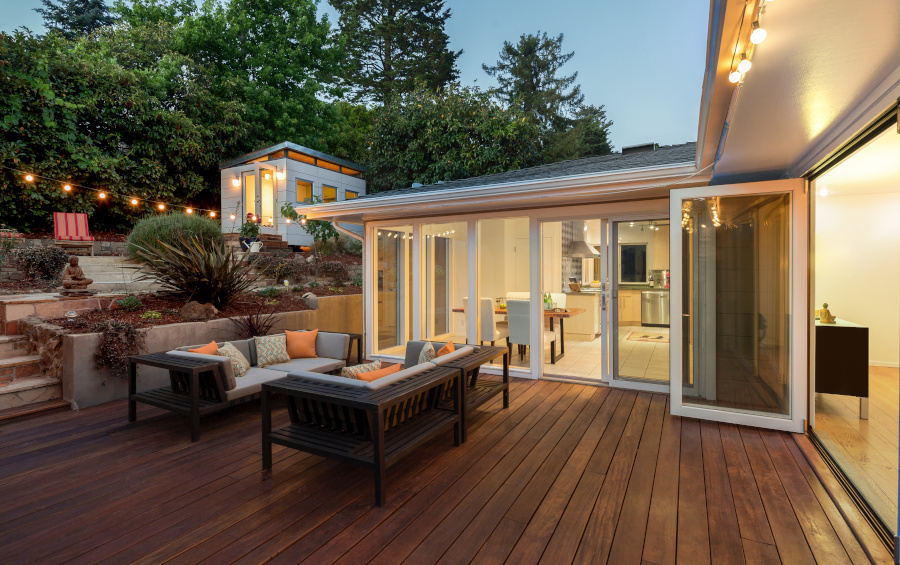
Deck Building and Maintenance
Here are some steps you can follow when building a deck:
- Determine the size and layout of your deck. Consider factors such as the size of your yard, how you plan to use the deck, and any local building codes or regulations that may apply.
- Obtain the necessary building permits. Depending on where you live, you may need to get a permit before you start building your deck. Check with your local building department to find out what is required in your area.
- Choose materials for your deck. Common options include wood, composite, and vinyl. Each has its own benefits and drawbacks, so consider your budget and maintenance needs when making a decision.
- Prepare the site. This may include grading the ground to ensure it is level, or adding support beams or posts if your deck will be raised off the ground.
- Install the foundation. This typically involves setting concrete footings or piers to support the weight of the deck.
- Assemble the frame. The frame includes the support beams, joists, and other structural elements that form the skeleton of the deck.
- Lay the decking. This is the visible surface of the deck and is typically made of wood or a composite material.
- Add any additional features. This could include railings, stairs, a built-in bench, or a pergola.
- Finish the deck. This may include staining or sealing the wood, or installing skirting or other decorative elements.
Deck Materials
There are several options to consider when choosing materials for your deck. Here is a brief overview of some common materials:
- Wood: Wood is a traditional and classic choice for decks. It is widely available, easy to work with, and relatively inexpensive. However, it requires regular maintenance such as staining or sealing to protect it from the elements and prevent it from rotting.
- Composite: Composite decking is made from a blend of wood fibers and plastic or vinyl. It is low maintenance and resistant to rot, but it is more expensive than wood.
- Vinyl: Vinyl decking is a synthetic material that is made from polyvinyl chloride (PVC). It is low maintenance and resistant to rot, but it is more expensive than wood.
- Aluminum: Aluminum decking is lightweight, durable, and low maintenance, but it is more expensive than wood.
- Pressure-treated wood: Pressure-treated wood is wood that has been treated with chemicals to protect it from rot and insects. It is less expensive than other options, but it requires regular maintenance to keep it looking its best.
- Redwood and cedar: Redwood and cedar are both naturally resistant to rot and insects, making them a popular choice for outdoor projects. They are more expensive than pressure-treated wood, but they require less maintenance.
Ultimately, the best material for your deck will depend on your budget, the look you want to achieve, and your maintenance preferences.

Building Permits
Building permits are necessary for many construction projects, including building a deck. A building permit is a document issued by a local building department that grants permission to begin construction on a project.
To simplify the process, many homeowners rely on deck builders such as SpaceStars who are familiar with local codes and permitting requirements. Their expertise not only speeds up approval but also ensures the finished deck meets safety and compliance standards.
There are several reasons why building permits are required for decks:
- Safety: Building codes exist to ensure that construction projects are safe for the people who use them. A building permit ensures that your deck is designed and built to meet these safety standards.
- Liability: If you build a deck without a permit and something goes wrong, you may be liable for any injuries or damages that occur as a result. By obtaining a permit, you can protect yourself from potential liability.
- Resale value: If you sell your home, a building permit can be used to show that the deck was built to code and is safe for use. This can increase the value of your home and make it more appealing to potential buyers.
To obtain a building permit for your deck, you will typically need to submit a set of plans that show the size and layout of the deck, as well as any structural elements such as support beams and footings. You may also need to pay a fee to cover the cost of the permit.
It is important to note that building codes and permit requirements can vary by location. Be sure to check with your local building department to find out what is required in your area.
Maintaining Decks
Maintaining a deck is important to keep it looking its best and to extend its lifespan. Here are some tips for maintaining your deck:
- Clean your deck regularly. Dirt and debris can accumulate on your deck, causing it to look dirty and worn. Use a deck cleaner or a mild detergent and water to clean the surface of your deck.
- Remove stains as soon as possible. If you spill something on your deck or if you notice a stain, it is important to clean it up as soon as possible to prevent it from setting in. Use a deck cleaner or a mixture of equal parts water and vinegar to remove stains.
- Sand rough or splintered areas. If you notice any rough or splintered areas on your deck, use a sander or sandpaper to smooth them out. This will help prevent accidents and make your deck more comfortable to walk on.
- Protect your deck from the elements. Sun, rain, and snow can all take a toll on your deck over time. Use a sealant or water repellent to protect the wood from water damage, and consider using a deck cover or umbrella to provide shade and protect your deck from the sun.
- Check for rot and decay. Regularly inspect your deck for signs of rot or decay, such as soft or spongy wood or discoloration. If you notice any issues, repair them as soon as possible to prevent further damage.
By following these simple maintenance steps, you can keep your deck looking its best and extend its lifespan.
Homes for rent: Homes for rent in Massachusetts
Homes for sale: Homes for sale in Massachusetts